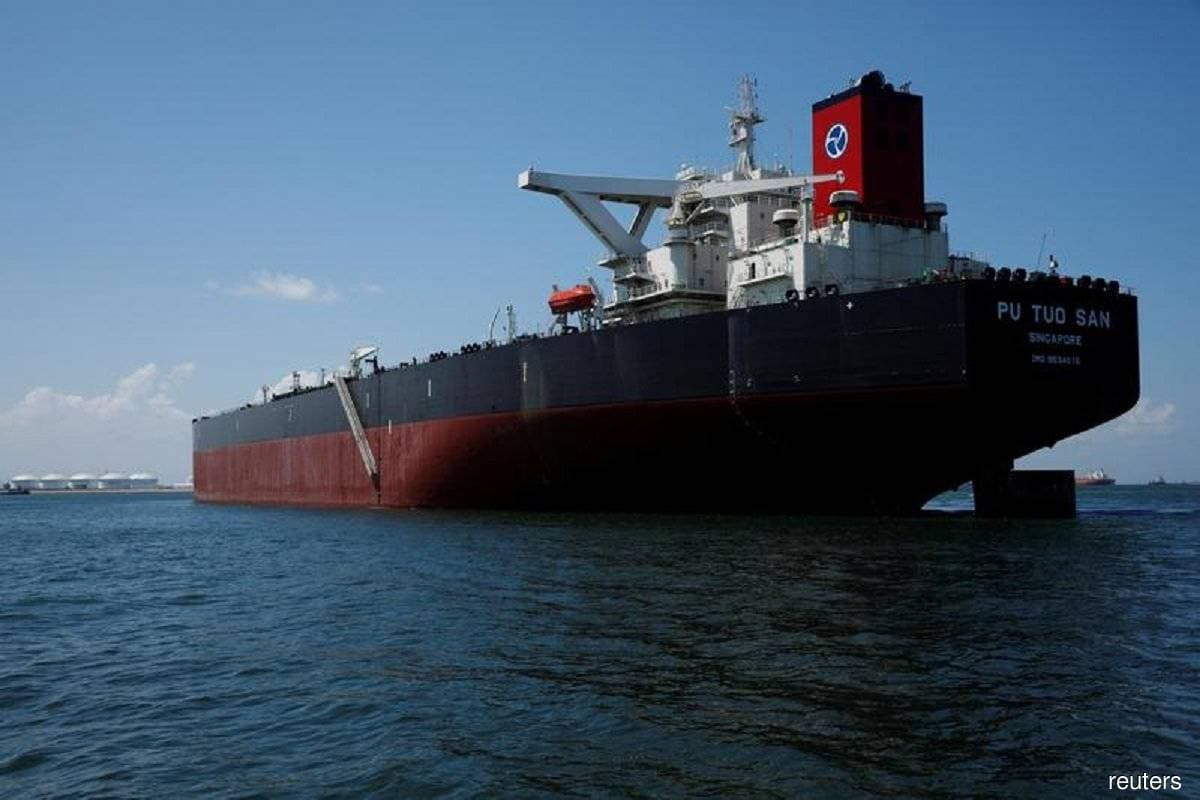
KUALA LUMPUR (Dec 29): Global tanker markets are expected to see better days in 2022 on the back of a likely increase in trade of oil and oil products, but the return to a pre-Covid-19 pandemic era can still be painful due to upcoming deliveries and slower scrapping of old ships.
In a report on Tuesday (Dec 28), S&P Global Platts said higher bunker prices are also eroding earnings, though it had been factored in new Worldscale flat rates.
Nevertheless, it said vulnerability to future bunker price spikes remains.
Citing Ole-Rikard Hammer, an Oslo-based senior analyst for oil and tankers with Arctic Securities, it said tanker markets are expected to be clearly better in 2022 but not yet back to "normal" levels.
The report said MSI Strategies International forecast daily average spot very large crude carrier (VLCC) earnings during the first quarter of 2022 (1Q22) at US$21,800 (about RM91,178.50), taking into account voyages to China from the US and the Persian Gulf, compared to losses of US$600 in 3Q21.
The report said MSI forecast that LR2 earnings on the Persian Gulf-Japan route will almost treble to US$18,300 in 1Q22 from 3Q19.
S&P Global Platts said if these gains fructify, it will be a welcome respite for owners who have struggled to break even for most of this year due to high bunker prices and surplus dirty tankers as oil demand was still below pre-Covid-19 levels.
It said the number of spot market VLCCs loading each month in the Persian Gulf stood at 110, a fifth lower than at end-2019.
Meanwhile, Hammer said oil demand continued to recover and with inventories sharply lower, trade will need to rise to keep up with demand.
According to S&P Global Platts Analytics, global oil demand declined 9.1 million b/d in 2020, while this year's recovery was just five million b/d. Growth is expected to be almost another 4.8 million b/d next year.
Surplus ships
S&P Global Platts quoted Hammer as saying that on the supply side, lack of scrapping af a time when there was redelivery of tonnage from floating storage kept fleet growth above 3% for much of this year, a level way too high in a weak-demand environment.
“This has created an overcapacity in tonnage, which will take time to absorb, '' he said.
“Fleet growth should continue to slow next year as storage is reduced and more old ships disappear from a market where weak rates make maintenance and classification surveys very expensive,” he added.